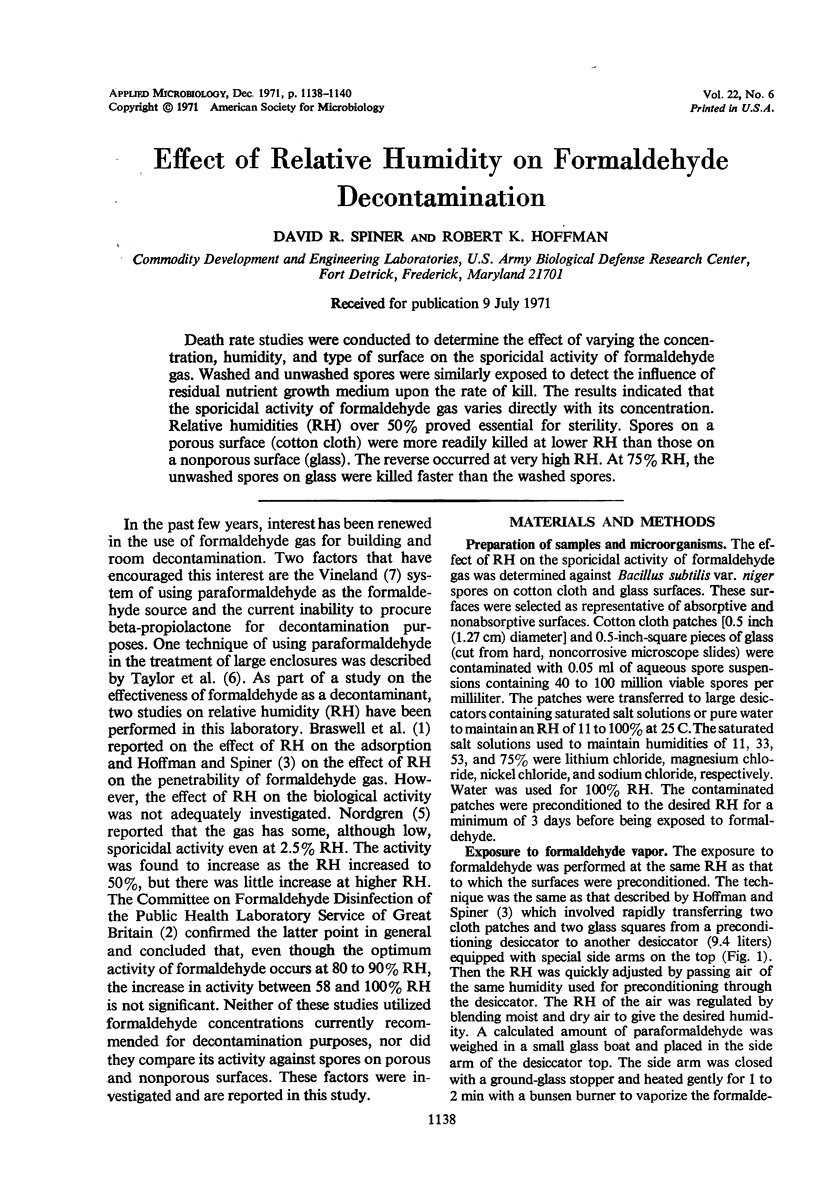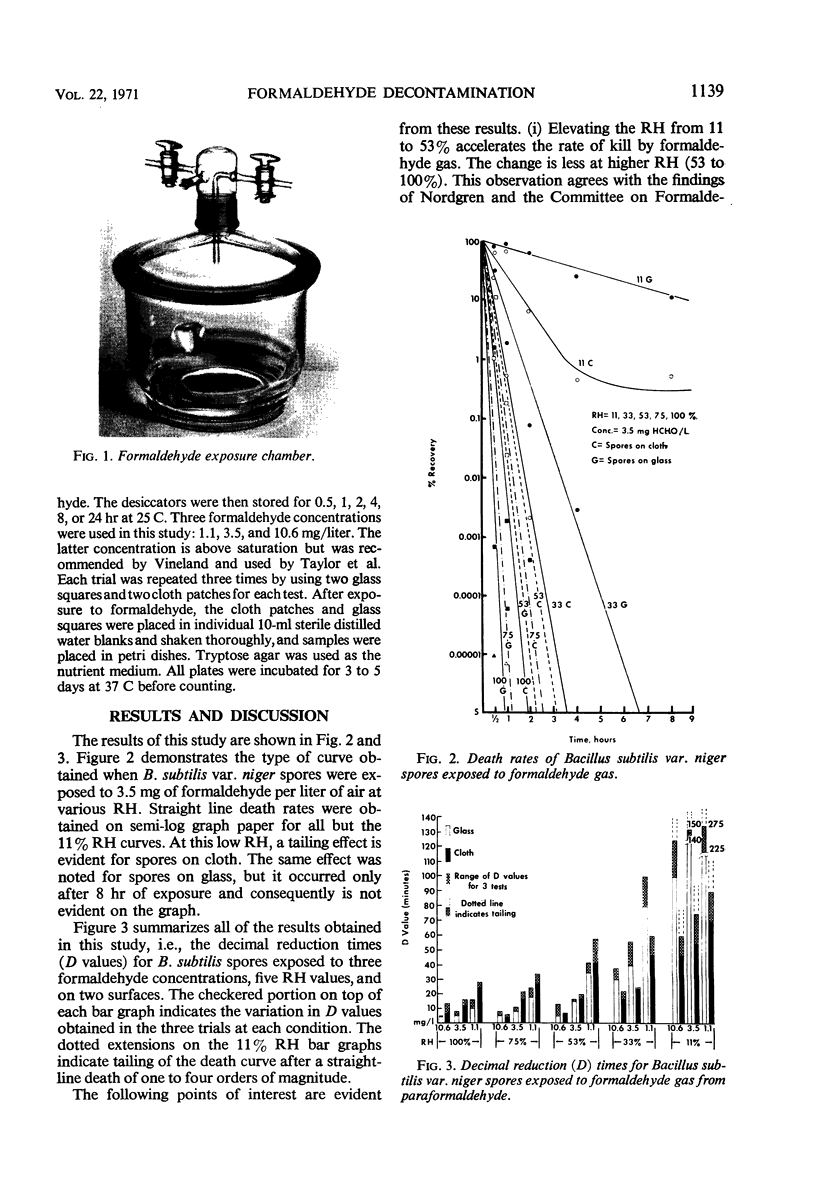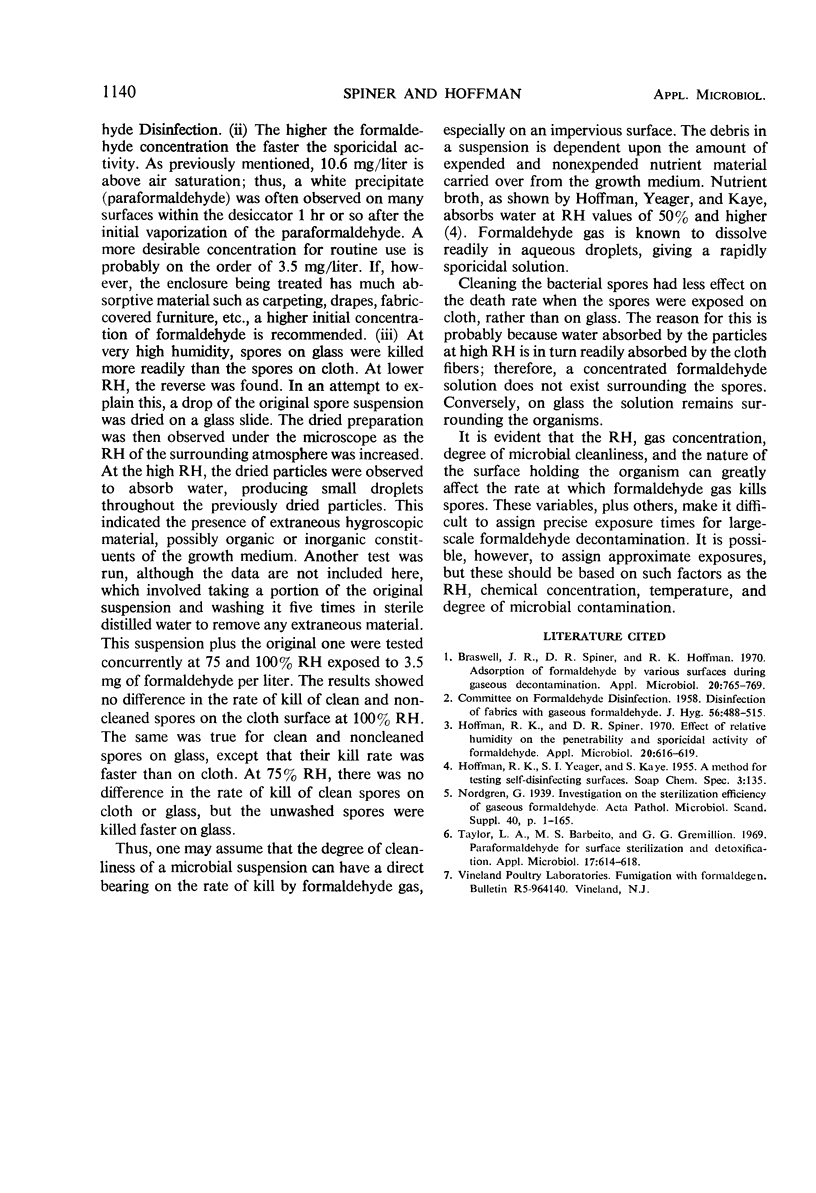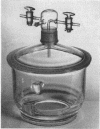Abstract
Death rate studies were conducted to determine the effect of varying the concentration, humidity, and type of surface on the sporicidal activity of formaldehyde gas. Washed and unwashed spores were similarly exposed to detect the influence of residual nutrient growth medium upon the rate of kill. The results indicated that the sporicidal activity of formaldehyde gas varies directly with its concentration. Relative humidities (RH) over 50% proved essential for sterility. Spores on a porous surface (cotton cloth) were more readily killed at lower RH than those on a nonporous surface (glass). The reverse occurred at very high RH. At 75% RH, the unwashed spores on glass were killed faster than the washed spores.
Full text
PDF


Images in this article
Selected References
These references are in PubMed. This may not be the complete list of references from this article.
- Braswell J. R., Spiner D. R., Hoffman R. K. Adsorption of formaldehyde by various surfaces during gaseous decontamination. Appl Microbiol. 1970 Nov;20(5):765–769. doi: 10.1128/am.20.5.765-769.1970. [DOI] [PMC free article] [PubMed] [Google Scholar]
- Hoffman R. K., Spiner D. R. Effect of relative humidity on the penetrability and sporicidal activity of formaldehyde. Appl Microbiol. 1970 Oct;20(4):616–619. doi: 10.1128/am.20.4.616-619.1970. [DOI] [PMC free article] [PubMed] [Google Scholar]
- Taylor L. A., Barbeito M. S., Gremillion G. G. Paraformaldehyde for surface sterilization and detoxification. Appl Microbiol. 1969 Apr;17(4):614–618. doi: 10.1128/am.17.4.614-618.1969. [DOI] [PMC free article] [PubMed] [Google Scholar]



